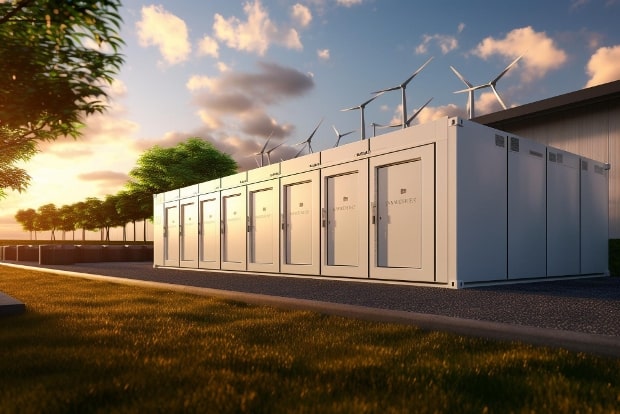Innovative Renewable Energy Storage Solutions

In the quest for sustainable energy sources, renewable energy has emerged as a beacon of hope. Yet, its intermittent nature poses a challenge: how can we store excess energy for times when the sun isn’t shining, or the wind isn’t blowing? Enter renewable energy storage solutions – the key to unlocking the full potential of clean energy. In this article, we’ll delve into the cutting-edge technologies and innovative approaches revolutionizing the way we store renewable energy.
1. Battery Energy Storage Systems (BESS)
Batteries have long been the go-to solution for energy storage, and advancements in battery technology are paving the way for more efficient and scalable energy storage solutions. Lithium-ion batteries, in particular, have become increasingly popular due to their high energy density and fast charging capabilities. From utility-scale installations to residential solar systems, BESS are playing a crucial role in stabilizing the grid and maximizing the use of renewable energy.
2. Pumped Hydro Storage
Pumped hydro storage is one of the oldest and most widely deployed forms of grid-scale energy storage. It works by pumping water uphill to a reservoir when excess energy is available, then releasing it to generate electricity when demand is high. While the technology itself is mature, innovative approaches such as underground pumped hydro and closed-loop systems are making pumped hydro storage more versatile and efficient than ever before.
3. Thermal Energy Storage (TES)
Thermal energy storage harnesses the power of heat to store and release energy on demand. From molten salt to phase-change materials, TES systems offer a reliable and cost-effective solution for storing renewable energy, particularly in applications such as concentrated solar power (CSP) plants. By capturing excess heat during the day and releasing it at night, TES systems can provide round-the-clock power generation without relying on fossil fuels.
4. Flywheel Energy Storage
Flywheel energy storage is a kinetic energy storage system that uses a spinning rotor to store energy. When energy is needed, the rotor’s momentum is converted back into electricity. While flywheels have a relatively low energy density compared to other storage technologies, they excel in fast-response applications such as frequency regulation and grid stabilization. Advances in materials and design are making flywheel systems more efficient and cost-effective, opening up new opportunities for grid integration.
5. Hydrogen Energy Storage
Hydrogen has emerged as a promising energy carrier for storing renewable energy in the form of hydrogen gas. Electrolysis, the process of splitting water into hydrogen and oxygen using electricity, enables the conversion of excess renewable energy into hydrogen for later use. Hydrogen can be stored and transported easily, making it a versatile option for long-term energy storage and fueling applications such as fuel cells and transportation.
6. Compressed Air Energy Storage (CAES)
CAES is a form of energy storage that uses compressed air to store energy in underground caverns or tanks. During periods of low energy demand, excess electricity is used to compress air and store it underground. When energy is needed, the compressed air is released and expanded through a turbine to generate electricity. While CAES has been around for decades, advancements in efficiency and cost-effectiveness are renewing interest in this technology as a viable option for grid-scale energy storage.
Conclusion: Powering a Sustainable Future
Renewable energy storage solutions are revolutionizing the way we generate, store, and distribute energy. From batteries to pumped hydro, innovative technologies are enabling us to harness the full potential of clean energy sources and build a more sustainable future. By investing in research, development, and deployment of these storage solutions, we can accelerate the transition to a low-carbon economy and mitigate the impacts of climate change.
